2020 Mississippi Medallion Plants
The Mississippi Medallion program was established in 1996 by the Mississippi Nursery and Landscape Association (MNLA). The program’s goal is to increase awareness of plant materials and to promote sales and production of ornamental plants in Mississippi. Compared to national campaigns such as All-America Selections and Perennial Plant of the Year, the Mississippi Medallion program focuses on plants adapted to the environment in Mississippi to benefit both consumers and the green industry.
This publication gives an introduction to the 2020 Mississippi Medallion Plants and is part of a series of publications that promote awareness of these plants. Look for these and other Mississippi Medallion Plants at your favorite local nursery and garden center.
ColorBlaze Golden Dreams Coleus
New coleus (Solenstemon) cultivars and varieties are released nearly every year. Gardeners and landscapers typically plant them in low-light conditions, like in the understory of trees, but breeding work has resulted in cultivars that can handle intense, full sun. Coleus is typically grown for its attractive, colorful foliage. ColorBlaze Golden Dreams is an attractive coleus with chartreuse yellow leaves with maroon veins, resulting in a nice contrast and a plant that stands out in the landscape. What is most remarkable about this coleus is that it did not form a single flower or inflorescence when trialed in Mississippi. This plant requires almost no maintenance in the landscape. It will grow about 3 feet high in full sun during the season, but it can be sheared back easily to keep it shorter. If grown in low light, the plant is not as full and thick as when grown in full sun. Also, the chartreuse turns more of a green color, but it is still an attractive plant for the shade. Fertilizer is not necessary but will help the plants grow larger and faster. Fertilize with a complete, balanced, slow-release fertilizer.
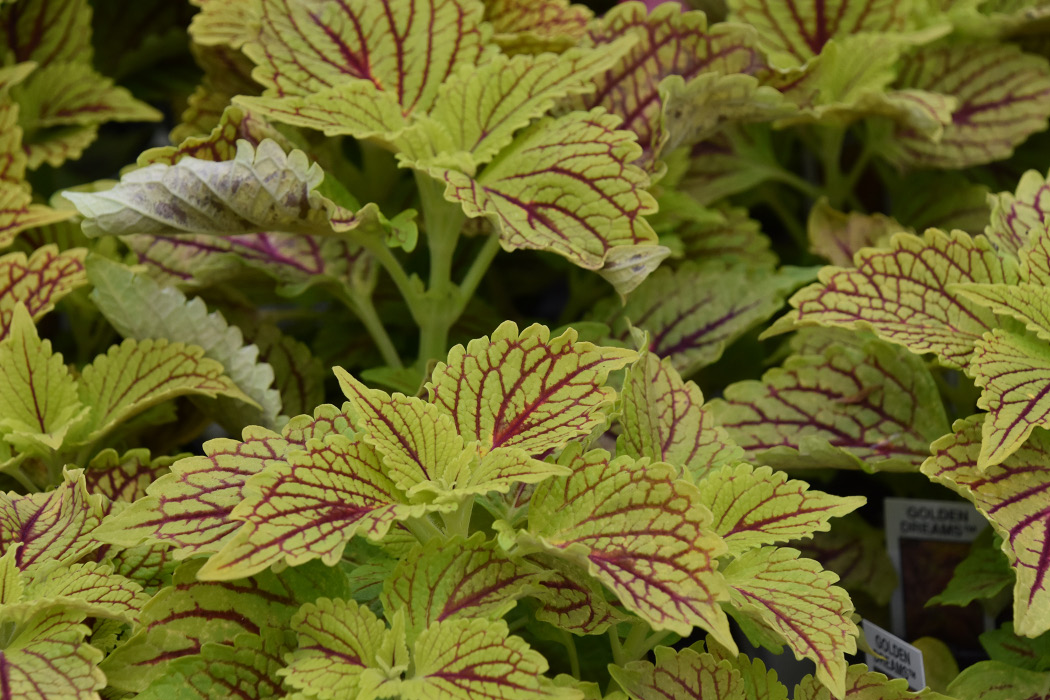
Tempting Tomatoes ‘Garden Gem’
Tempting Tomatoes ‘Garden Gem’ (Lycopersicon esculentum) is a semi-determinate, snack-sized tomato. At maturity, this plant will reach a height of 30 to 42 inches and a spread of 12 to 20 inches. ‘Garden Gem’ is ideal for Mississippi gardens as it produces over an extended period of time and thrives in heat and humidity. In the garden, space plants 24 to 30 inches apart, and provide support such as trellising, staking, or tomato cages. Well suited to container production, choose a 5- to 10-gallon pot with a diameter of 14 to 20 inches. Even in a container, some support will be required. Plum-shaped, 2-ounce fruits ripen in about 55 days. ‘Garden Gem’ will produce best in well-drained, fertile soils when given consistent irrigation. Exhibiting disease resistance and high fruit yield, ‘Garden Gem’ is a hardy addition to the spring and summer garden.
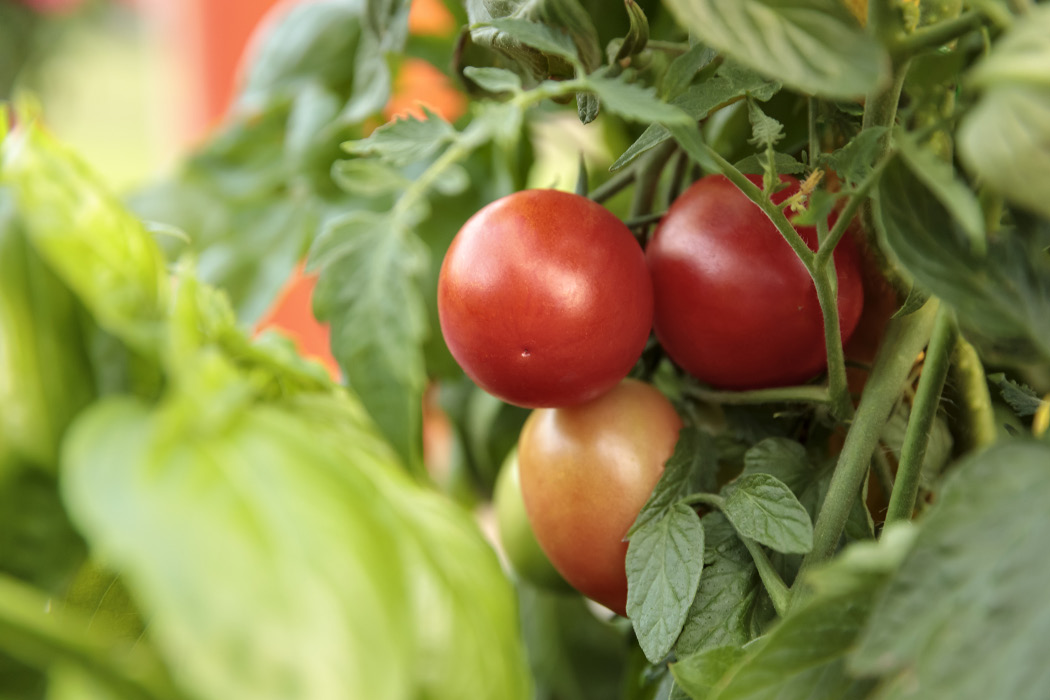
American Beautyberry
American beautyberry (Callicarpa americana) is a deciduous, understory shrub native to Mississippi and the southeastern United States. This plant has an open growth habit and usually reaches 3 to 5 feet tall and wide. Branches are long and gracefully arching with smooth bark that is dark- to reddish-brown. Light green leaves are opposite, in pairs of three, and half as wide as they are long. The lower leaf surface of young leaves is covered with hairs. Leaves fade to a yellow-green in the fall. Pink flowers are fragrant, small, and in dense clusters at the bases of the leaves. They occur in late spring through midsummer. The most attractive feature is the glossy fruit that ripens September through October. Beautyberry produces large clusters of purple berries; white- and pink-berried selections are also available. Fruit remains on the plant well after the leaves fall off. Beautyberry is often planted in landscapes as a food source and habitat cover for wildlife. Berries are edible by humans but are astringent; they are more for use in jelly and wine. Beautyberry can be pruned back to 1 foot high during winter to encourage more compact growth, if desired.
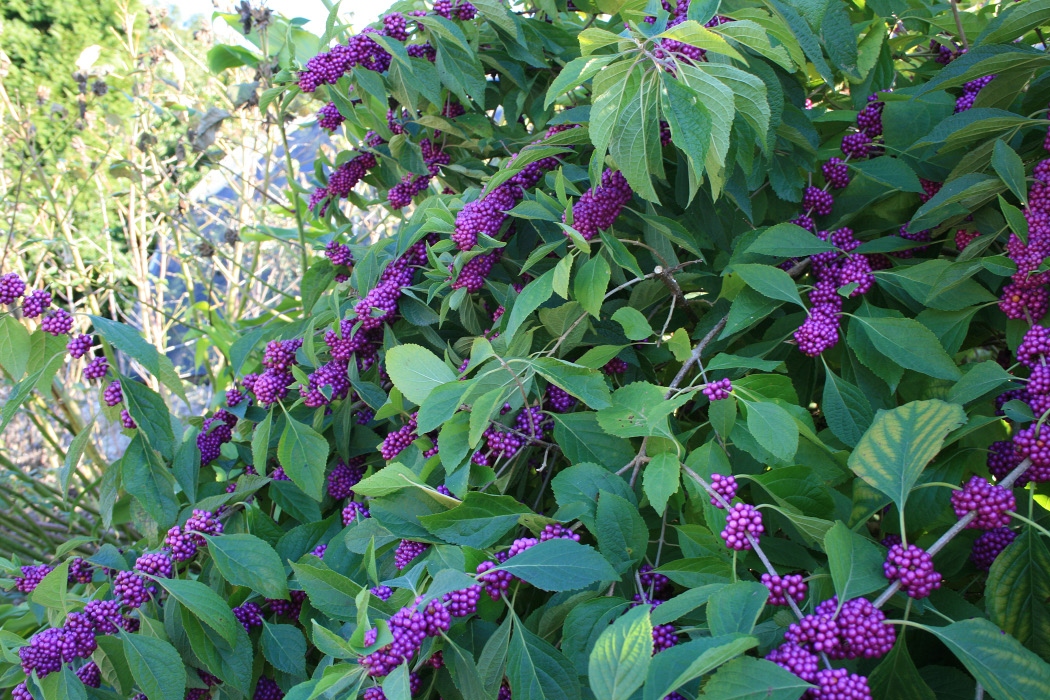
Luscious Series Lantana
Luscious series lantana (Lantana camera) features brightly colored flower clusters covering mounds of dark-green foliage that will bloom all season in Mississippi’s hot and humid summers. There are quite a few colors available, including Lemonade (yellow), Citrus Blend (red, orange, and yellow blend), Berry blend (fuchsia, orange, and yellow blend), Royale Cosmo (magenta and yellow-orange), Grape (lavender), and others. Plant lantana in full sun for best flowering performance. Landscape beds should be well-drained and amended well with organic matter. Once established, lantana is very drought tolerant. During periods of low rainfall and high temperatures, lantana’s flower colors will make your landscape pop. Light pruning through the summer will help maintain the size and tidiness, as well as stimulate more flowering and a bushier structure. Fertilize twice per month with water-soluble fertilizer to maintain flowering potential. In the early spring, cut back hard to about 4 to 6 inches to make room for new growth. The only significant pest is lantana lace bug. This bug causes leaf stippling and leaves tar-like frass on the undersides of leaves, very similar to azalea lace bug damage. Heavy infestations will reduce flowering and even cause the plant to defoliate. Apply systemic insecticides to the plant root zone during May and July. Control insecticides include dinotefuran, imidacloprid, and spinosad.
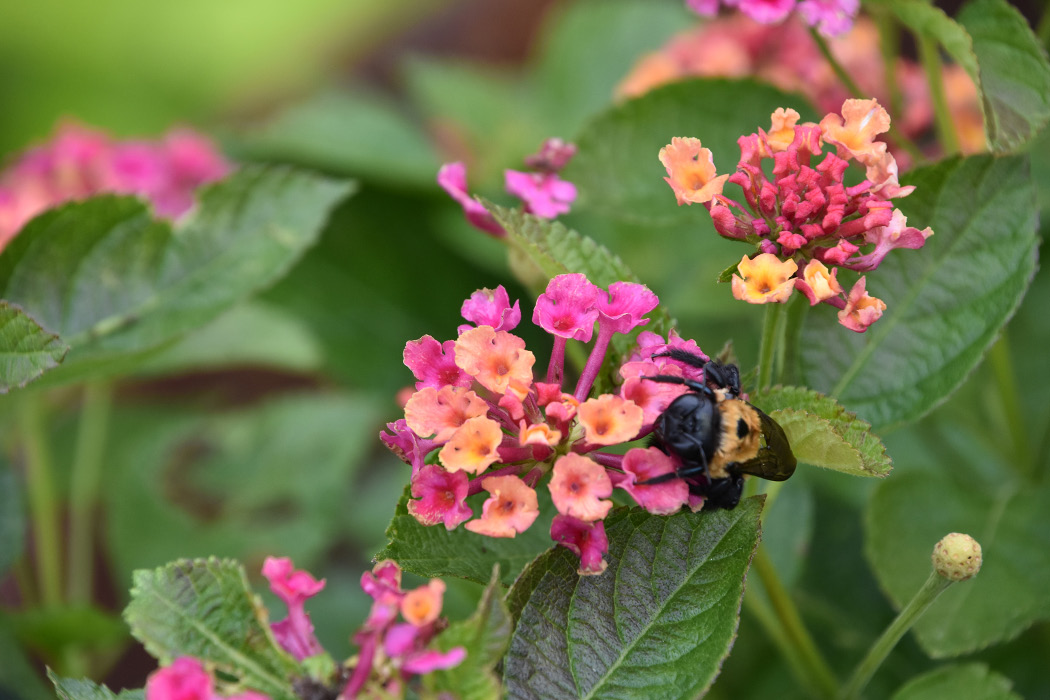
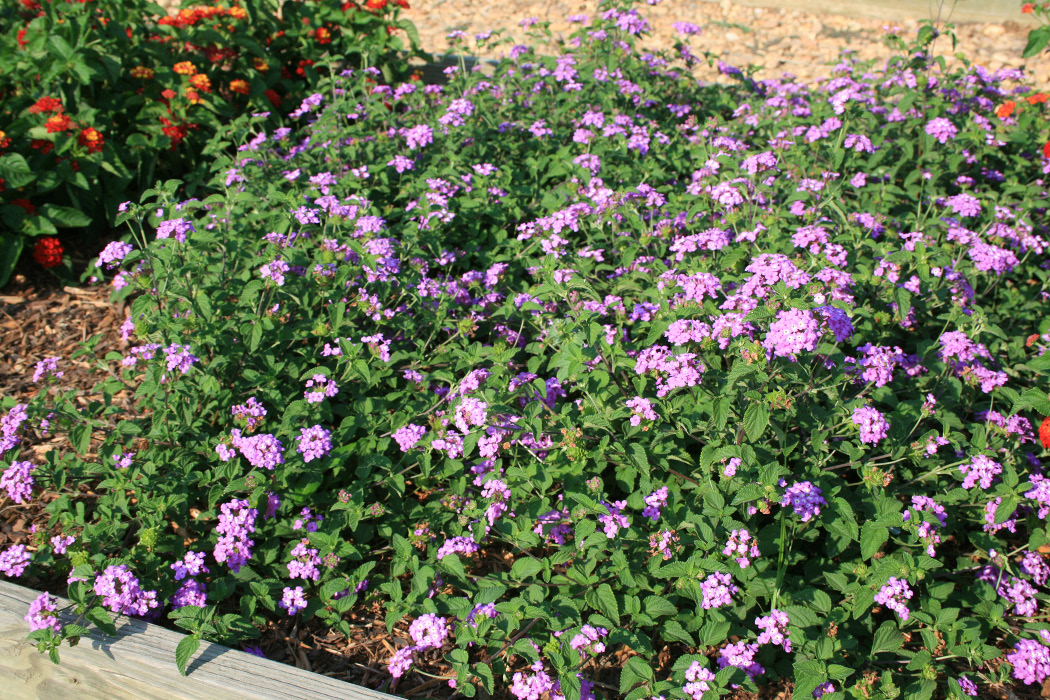
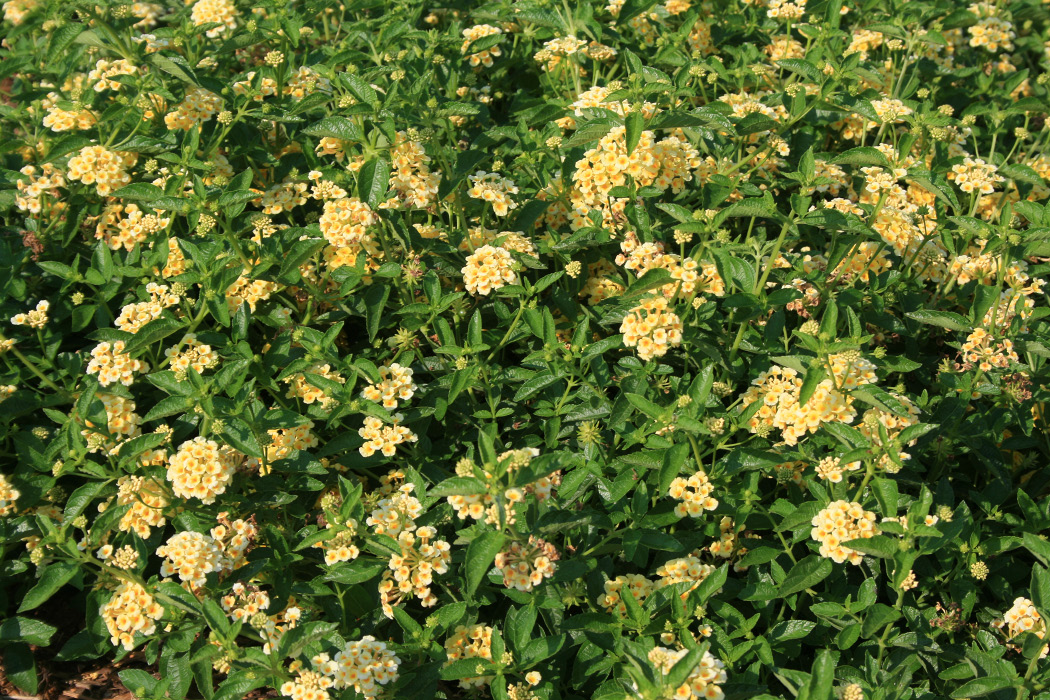
The information given here is for educational purposes only. References to commercial products, trade names, or suppliers are made with the understanding that no endorsement is implied and that no discrimination against other products or suppliers is intended.
Publication 3419 (POD-02-20)
By Gary R. Bachman, PhD, Extension/Research Professor, Coastal Research and Extension Center; Shaun R. Broderick, PhD, Assistant Extension/Research Professor, Truck Crops Branch Experiment Station; Christine E. H. Coker, PhD, Associate Research/Extension Professor, Coastal Research and Extension Center; and Jeff Wilson, PhD, Assistant Professor, North Mississippi Research and Extension Center.
Copyright 2020 by Mississippi State University. All rights reserved. This publication may be copied and distributed without alteration for nonprofit educational purposes provided that credit is given to the Mississippi State University Extension Service.
Produced by Agricultural Communications.
Mississippi State University is an equal opportunity institution. Discrimination in university employment, programs, or activities based on race, color, ethnicity, sex, pregnancy, religion, national origin, disability, age, sexual orientation, genetic information, status as a U.S. veteran, or any other status protected by applicable law is prohibited. Questions about equal opportunity programs or compliance should be directed to the Office of Compliance and Integrity, 56 Morgan Avenue, P.O. 6044, Mississippi State, MS 39762, (662) 325-5839.
Extension Service of Mississippi State University, cooperating with U.S. Department of Agriculture. Published in furtherance of Acts of Congress, May 8 and June 30, 1914. GARY B. JACKSON, Director
The Mississippi State University Extension Service is working to ensure all web content is accessible to all users. If you need assistance accessing any of our content, please email the webteam or call 662-325-2262.





